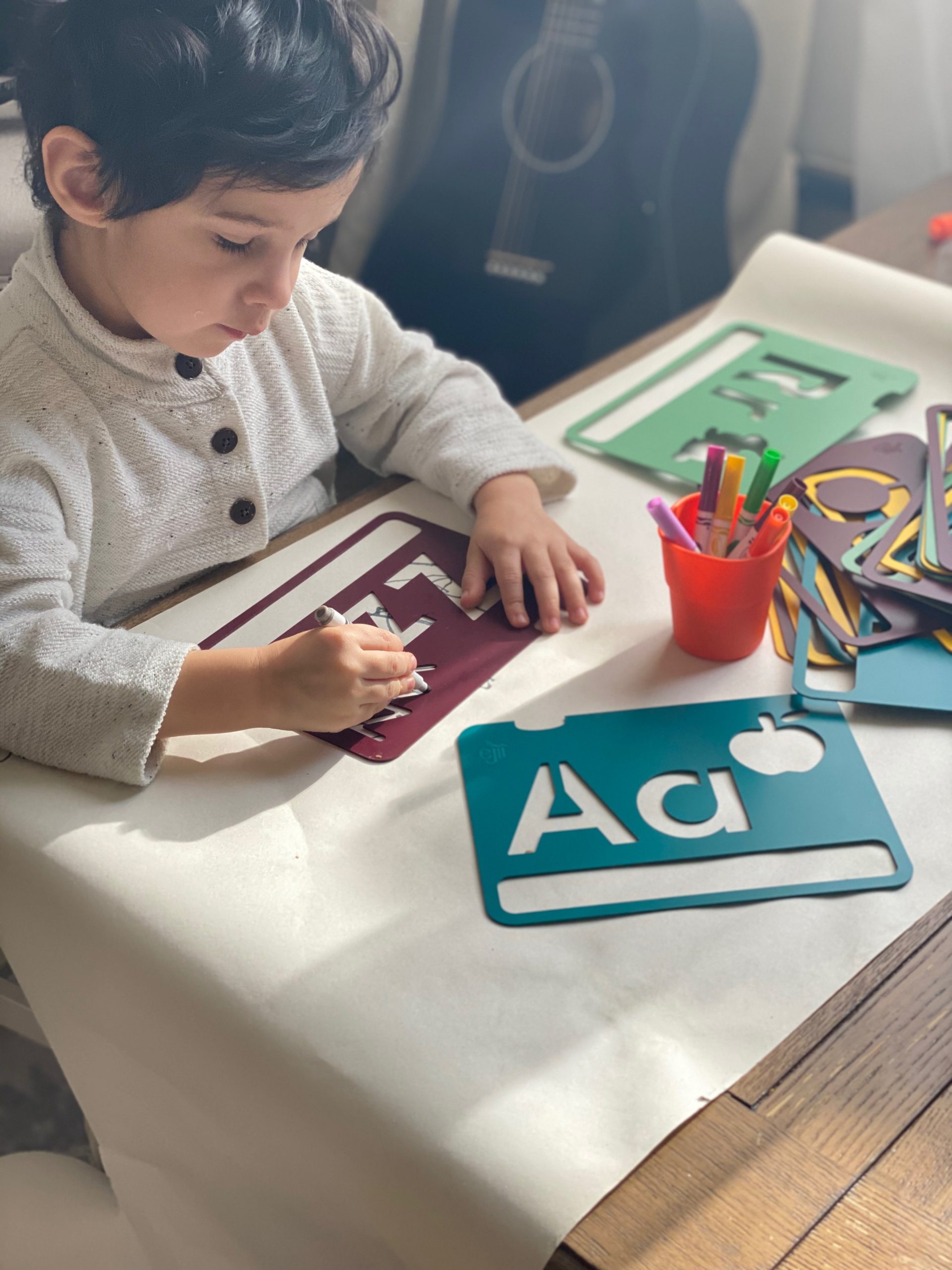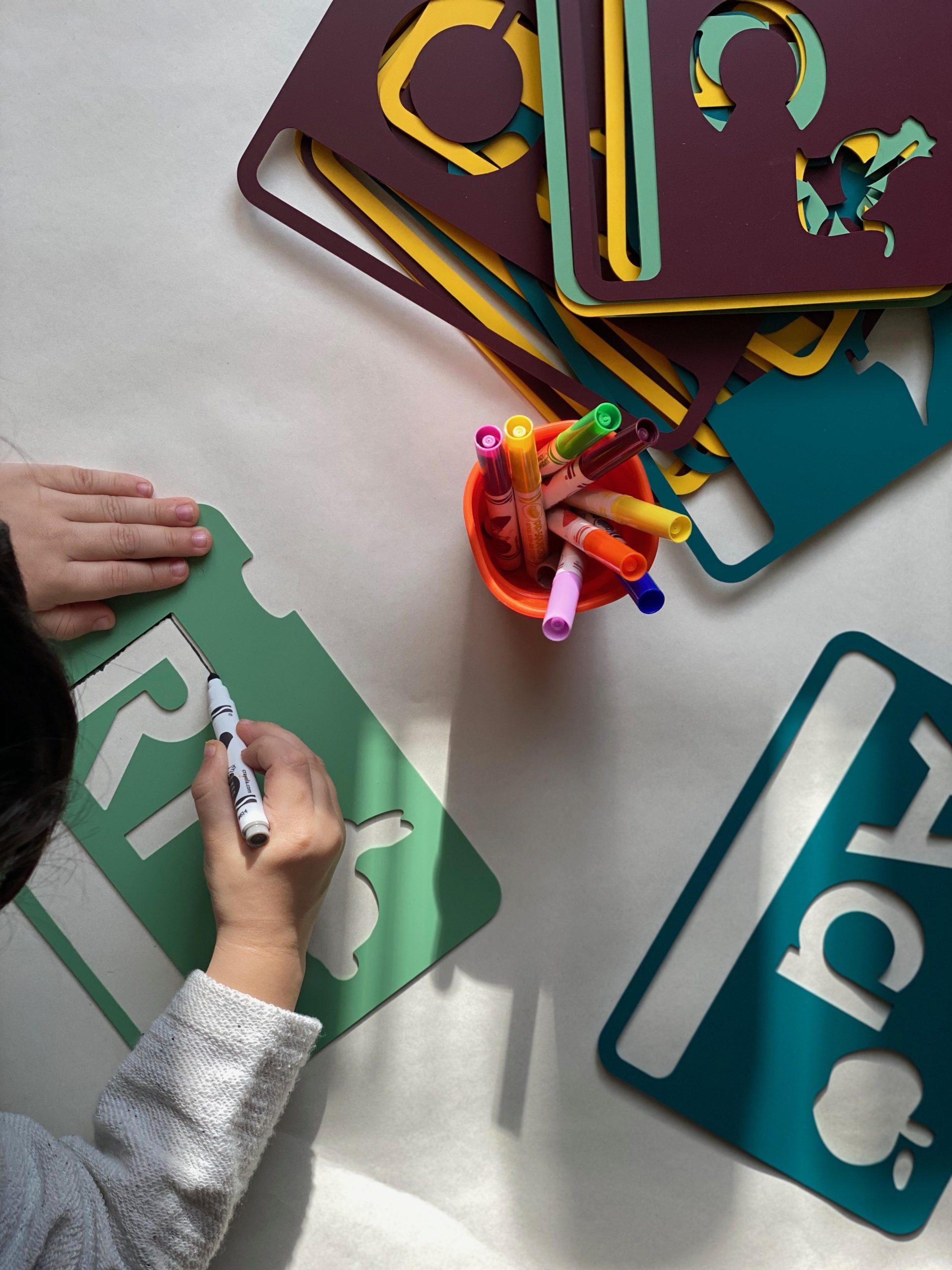The early stages of handwriting look different from child to child. When kids are first learning the alphabet, singing their ABCs and beginning to understand what letter their names start with, they are building the foundation for more advanced letter work in the years to come. However, it’s never too early to start practicing at home with methods that are less involved and more fun!
At Wise Wonder, we’re big proponents of incorporating many different types of writing utensils, tools, and more to make handwriting – and the process of learning! – an enjoyable, exciting experience. There are plenty of options that create a playful learning experience.

Introduce stencils.
Stencil work encourages emergent writing while still providing structure, a guide, and tracing work. We use stencils that also have an image that correlates to the letter so start the introduction of phonics as well. This activity feels more like drawing than anything else and can bolster the process of identification as well as formation.
Incorporate new textures to write on and with.
Our teachers love using whiteboards, chalkboards, and magnetic drawing boards with our youngest students. These options often feel somewhat magical – like something exclusive to teachers or adults – which adds a layer of fun and excitement to the activity. Instructors can add as much or as little structure with these options as possible. Sometimes we will write a letter first and have the student trace over it or erase it in the proper letter formation, and sometimes we’ll just remind them where letters begin and end. No matter what route the lesson takes, it’s a great way to keep early writers eager to grow and continue the craft of handwriting.
Make letters from Play-Doh, blocks, and more.
When caregivers or teachers involve playing with learning, it makes for happy and well-rounded students. During the fine motor portion of our curriculum, our teachers encourage students to build letters from Play-Doh. We sometimes use Play-Doh stencils, but will often invite them to roll the dough out and build letters independently. This can be done at all stages of handwriting. In the early days, students are often more inclined to create the shortlist of letters they know than to branch out. But as we discuss the alphabet and learn letter formation from A to Z, students become excited to test out their skills in a no-pressure environment.

The Wise Wonder team is always looking for new ways to make learning as magical as possible. Whether that’s through the inclusion of fine motor play and development, or by encouraging students to progress at their own pace – there’s always room to grow and learn.
How do you practice handwriting at home? Are there any particular activities your little ones love best? Let us know in the comments below!
